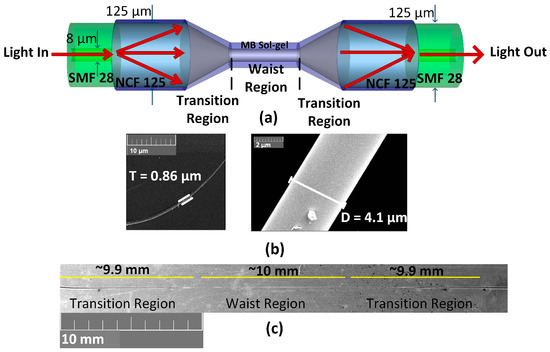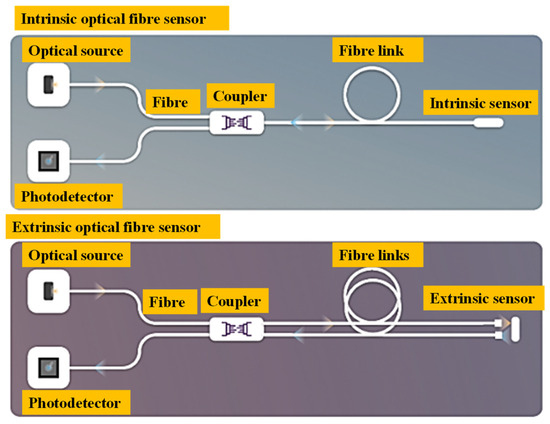Breakthroughs in Optical Fibre Diameter Analyser Measurement Tools
Breakthroughs in Optical Fibre Diameter Analyser Measurement Tools
Blog Article
Maximize Your Fibre Optic Efficiency: Recognizing Optical Fibre Diameter Analyser Innovation
The efficiency of fibre optic systems is critically influenced by the precision of their diameter, a factor usually ignored in the pursuit of optimal signal integrity. Understanding the technology behind optical fibre size analysers exposes the complex equilibrium between measurement accuracy and production quality. These devices not just improve compliance with market standards but likewise offer real-time understandings that can preemptively deal with prospective issues. The implications of their usage prolong past plain dimension; they can basically change the landscape of fibre optic performance. What aspects should one think about to harness their complete potential?
Importance of Optical Fiber Diameter
The size of optical fiber plays a vital function in determining the efficiency and efficiency of communication systems. It affects a number of key criteria, including the mode of light propagation, depletion, and data transfer ability. Bigger sizes normally allow for numerous light settings, helping with higher information transmission prices. Conversely, smaller sized sizes tend to sustain fewer modes, which can improve signal clarity and lower crosstalk.

Additionally, recognizing the diameter's effects can cause set you back savings by minimizing the requirement for signal amplification and repeaters in comprehensive networks (optical fibre diameter analyser). To conclude, the significance of optical fibre size can not be overstated, as it directly impacts the general effectiveness and reliability of modern communication systems

Exactly How Diameter Influences Signal Quality
Signal quality in optical fiber systems pivots substantially on the size of the fiber. The size influences numerous vital criteria, consisting of depletion, bandwidth, and modal dispersion. A smaller sized diameter can cause higher attenuation rates, leading to signal loss as light journeys via the fibre. This attenuation can jeopardize the integrity of the transmitted information, bring about a decline in signal high quality, especially over lengthy distances.
Conversely, larger diameters typically permit for improved light capture and minimized modal dispersion, enhancing signal clearness. In multimode fibers, a bigger core diameter can support multiple light settings, but it might additionally present intermodal diffusion, which can degrade signal quality. Choosing the ideal fiber size is crucial for accomplishing the desired performance in specific applications.
Moreover, the communication in between the fiber diameter and the wavelength of the light utilized plays a crucial function in identifying the effective transmission range and general signal stability. Recognizing exactly how fibre size affects signal quality is necessary for network designers and designers making every effort to enhance optical fibre systems for trustworthy, high-speed data transmission.
Review of Size Analyser Modern Technology
In lots of optical fiber production processes, accurate dimension of fiber diameter is vital for guaranteeing constant efficiency and quality (optical fibre diameter analyser). Diameter analysers are advanced tools created to assess the physical dimensions of optical fibres with high precision. They employ this content innovative optical and laser modern technologies to determine the diameter, ovality, and concentricity of the fiber, hence supplying important Web Site data for quality assurance
These analysers can run in-line throughout the manufacturing procedure or as part of off-line screening protocols. In-line systems make it possible for real-time tracking, enabling makers to adjust specifications immediately, thus preserving ideal manufacturing problems. Off-line analysers, on the various other hand, give detailed examinations of sets, making sure that any kind of deviations from specified tolerances are identified and attended to.
Diameter analysers considerably add to the decrease of problems in optical fibres, enhancing overall product reliability. By regularly gauging vital criteria, these modern technologies help with compliance with market requirements and specs. As the demand for high-performance optical fibres proceeds to increase, the duty of size analysers ends up being significantly important in achieving the preferred top quality and performance requirements in fibre optic systems.
Key Attributes of Fibre Size Analysers
Although different versions of fiber size analysers exist, they typically share a number of essential features that boost their performance and integrity. One of one of the most significant features is high-resolution dimension abilities, which make certain precise size analyses, vital for keeping quality assurance in fibre manufacturing. Additionally, many analysers include innovative optical sensors made to spot minute variants in fibre diameter, hence supplying important information for process optimization.
One more essential attribute is real-time monitoring, permitting drivers to obtain prompt feedback on fiber size throughout the production procedure (optical fibre diameter analyser). This capacity helps with rapid modifications and decreases the chance of flaws. Many analysers additionally come equipped with user-friendly user interfaces, allowing drivers to conveniently browse with information and setups results
Additionally, robust data storage and evaluation capabilities are important for tracking historical efficiency trends and making sure conformity with industry criteria. Some versions even offer connectivity choices for integration right into existing production control systems, enhancing total operational effectiveness. Compact and mobile layouts permit for flexible release within manufacturing settings, guaranteeing that quality assurance procedures are seamless and effective. These features jointly add to the efficacy of fiber size analysers in optimizing fiber optic efficiency.
Best Practices for Fibre Optimization

First, regular calibration of optical fibre size analysers is important. This ensures accurate measurements and decreases potential disparities that might impact performance. Next, maintaining a clean workplace is essential; dirt and impurities can result in signal deterioration.
Furthermore, it is important to pick fibres that fulfill details application needs. This includes reviewing factors such as depletion, data transfer, and environmental conditions. Correct installment techniques need to also be followed, consisting of preventing sharp bends and excessive tension, which can compromise fibre honesty.
Additionally, employing sophisticated monitoring systems can promote real-time efficiency assessments, making it possible for prompt identification of issues. Normal testing and upkeep ought to be performed to make certain that fibres remain within Full Article optimal functional criteria.
Finally, training employees on the most current fibre optimization technologies and techniques will improve their ability to carry out reliable methods. By following these ideal methods, organizations can dramatically boost the performance and life expectancy of their optical fiber systems, making certain reliable communication and information transfer.
Final Thought
In final thought, the assimilation of optical fiber diameter analyser technology is important for optimizing fiber optic efficiency. By ensuring accurate dimensions of fibre dimensions, these analysers dramatically enhance signal high quality and lower losses throughout data transmission.
Signal top quality in optical fiber systems hinges considerably on the size of the fibre.In several optical fibre manufacturing processes, exact measurement of fibre diameter is important for guaranteeing constant performance and quality. As the need for high-performance optical fibers proceeds to increase, the function of size analysers ends up being significantly crucial in accomplishing the wanted quality and performance standards in fibre optic systems.
These attributes collectively contribute to the effectiveness of fibre diameter analysers in enhancing fiber optic efficiency.
In verdict, the assimilation of optical fibre size analyser innovation is essential for maximizing fibre optic performance.
Report this page